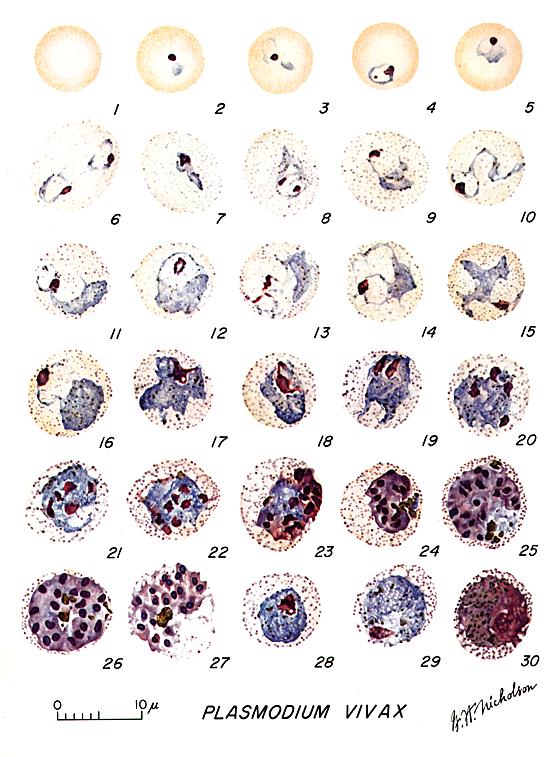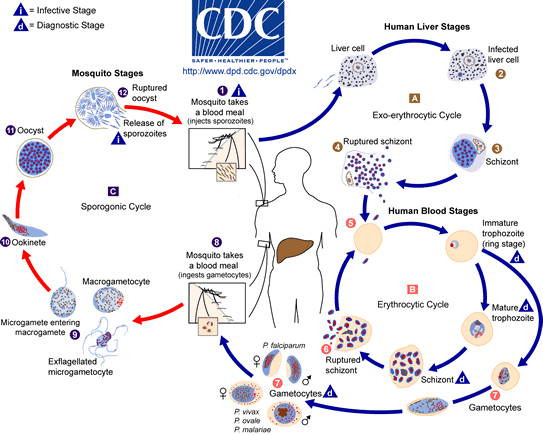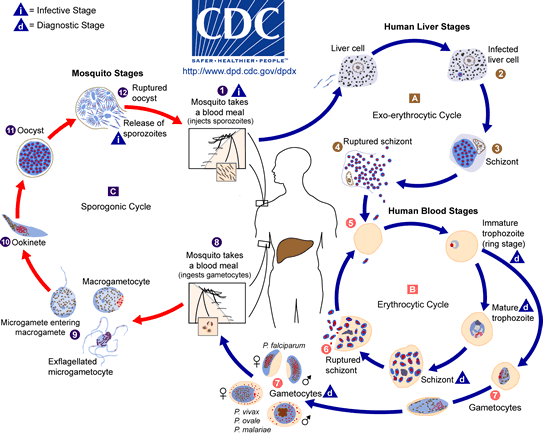QUESTION
Please show parasites pictures.
ANSWER
The first plate below shows various stages of the life cycle of Plasmodium falciparum, the most deadly form of malaria, and the most commonly found type in sub-Saharan Africa. Below that, a similar plate shows a series of images of Plasmodium vivax, the most widespread type of malaria.
A: The stages of P. falciparum. 1: Normal red cell; Figs. 2-18: Trophozoites (among these, Figs. 2-10 correspond to ring-stage trophozoites); Figs. 19-26: Schizonts (Fig. 26 is a ruptured schizont); Figs. 27, 28: Mature macrogametocytes (female); Figs. 29, 30: Mature microgametocytes (male). Illustrations from: Coatney GR, Collins WE, Warren M, Contacos PG. “The Primate Malarias”. Bethesda: U.S. Department of Health, Education and Welfare; 1971. Reproduced here courtesy of the CDC (www.cdc.gov)




